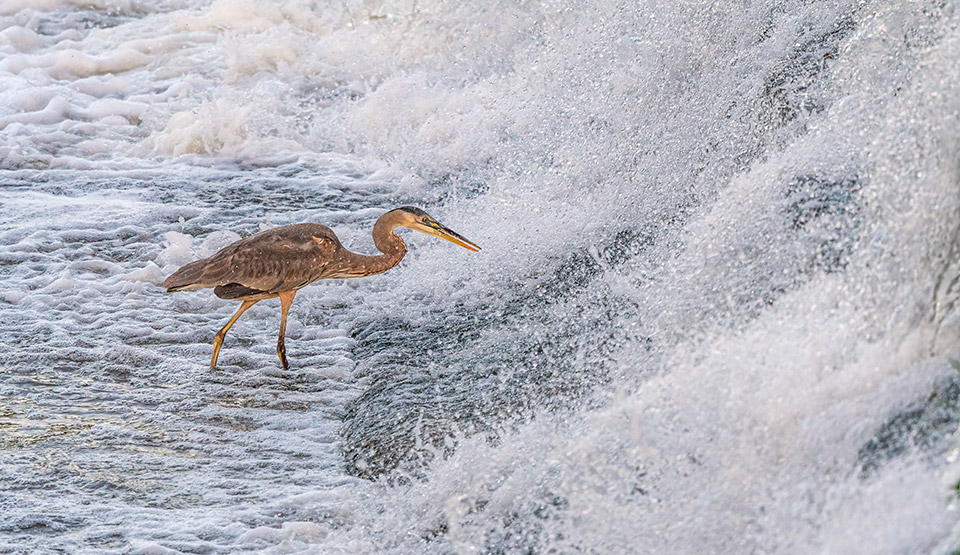JK: Both of these photographs show the same subject, but they were made using different shutter speeds. Which do you prefer?
JD: When I was photographing this great blue heron, using a fast shutter speed resulted in a frozen moment in time, but I wanted to simplify the composition by eliminating the distractions of the bubbling water. By using a slower shutter speed, I was able to portray a smooth, silky backdrop, which to me is much more appealing and makes the heron stand out. It also conveys the motion of the water in a different way.


JK: We hear all the time from readers who dislike the use of slow shutter speeds, especially with flowing water. They say it looks unnatural or different from what the human eye would see. What’s your answer to that?
JD: For one thing, the human eye doesn’t see the world the way any camera does. To me, photography is about interpreting what I see and feel, and the camera gives me several creative tools to do that. Shutter speed is one of those tools. Using a slower shutter speed isn’t changing the scene or manipulating the image. It’s simply looking at the same scene over a longer period of time —
a different interpretation.
JK: That interpretation can be technical, but it also has to be artistic, right?
JD: It doesn’t have to be, but I think the better photographs are. I see a lot of photos with no rhyme or reason to them. The best photos are those where you can tell the photographer had a reason for doing what they did — they had a goal in mind. Here, I had a choice: Freeze a millisecond of time, or capture a longer look at the scene. For artistic reasons, I chose the latter. Another photographer might make a different choice for a different reason, and that’s OK.
JK: Given your background in photojournalism, is there also a storytelling aspect here?
JD: Yes, but more than that, it’s about problem-solving. Within that are choices, both technical and artistic, but it comes down to: What do I want to say with this image? To me, that’s the whole enchilada in terms of creativity. Every person has a unique way of seeing things, and the worst thing you can do is say, “I want to shoot like Jack Dykinga.” There’s a traditional way of doing things, and then there’s putting your own stamp and vision on them. As photographers, we should be trying all our creative options to see what works best. If we do things only a certain way, that isn’t very creative.
Do you have a question about photography? Email it to [email protected], and our photo editor, Jeff Kida, will try to answer it in a future issue.

